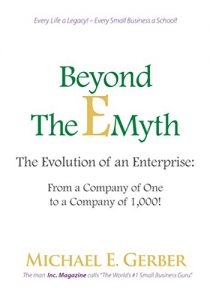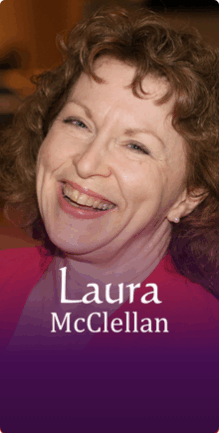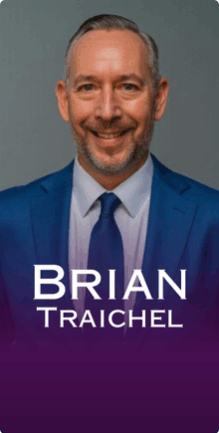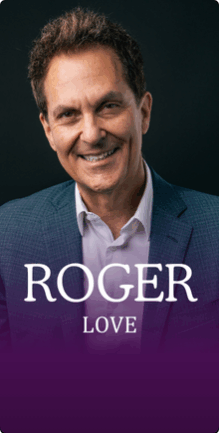
In this Episode
- [03:33]Michael launches things off by talking a bit about himself. We learn that he’s spent decades specializing in working with small business owners.
- [05:30]In his early days, Michael was a jazz saxophone player, then an encyclopedia salesman, then filled a handful of other unexpected roles. He also shares the role his mother played in his life. He also elaborates on how he got involved in the world of small business.
- [11:11]Michael discusses his discovery that most small business owners didn’t understand business, and explains how stopping at a McDonald’s made everything click for him.
- [13:07]What is the E-myth? Michael talks about the difference between true entrepreneurs and “technicians suffering from an entrepreneurial seizure.”
- [14:40]What are these technicians missing? In his answer, Michael talks about how to take a company of one to a company of one thousand, which is the subject of his new book.
- [16:45]Michael talks about the eight steps that form the system in Beyond the E-Myth. The first four steps are these: 1. Developing a dream. 2. Developing a vision. 3. Developing a purpose. 4. Developing a mission.
- [18:41]Why those four? Because those are the four products of the four personalities of an entrepreneur, Michael explains.
- [21:33]Orion steps in for a moment to rephrase and clarify what Michael has been saying. He agrees with what she says, then elaborates on it.
- [22:56]How do you find the right story? Michael answers, and clarifies what he means about finding a story.
- [24:46]Michael talks about NewCo (as opposed to OldCo). He then talks about the next four steps, as follows: 1. The job. 2. The practice. 3. The business. 4. The enterprise. This is the “hierarchy of growth,” he says.
- [28:48]The job, practice, business, and enterprise system is also a process of a series of steps, Michael explains. He talks us through how this might work for a hypothetical case of helping women with relationships.
- [31:07]What do you do once you have the client fulfillment system completed and written out? Next, Michael tells us, you build a turnkey client acquisition system. Lead generation, lead conversion, and client fulfillment should all be addressed in this turnkey system.
- [32:30]Michael walks us through an exercise that involves better defining your business by drawing circles with spokes representing various parts of your business.
- [34:34]By creating a business in the way Michael describes, you’re creating something you’ll be able to sell, Michael explains.
- [34:57]How do you create a manual for every system? “It’s simple, you just learn how to do it,” Michael answers. He recommends going to his site at beyondemyth.com to learn more.
- [36:13]What makes a good business owner? The abilities to focus your attention and to persevere are the most critical; everything else can be learned.
- [36:42]Michael clarifies what he means by focusing on equity over income.
- [37:42]What are Michael’s three steps to living a stellar life? What makes him happy? “What makes me happy is when my life is happy,” he shares. Creating also makes him happy, at least most of the time.
About Today’s Show
Hello Michael and welcome to Stellar Life. It’s my honor and privilege to have you here. Thank you so much for coming on the show.
My delight. What would you like me to talk about?
I would like you to start by telling us a little bit about yourself. Where did you start? What’s your vision?
Great. First of all, I’m an author. I’m the author of 28 books on entrepreneurship and small business. In the past 40 years, I’ve specialized in working with small business owners. Many of whom own what I call a company of one. Meaning it’s a very small company and they are it. Because they are it, if some times are going badly for them, they don’t show up and the business goes bye bye. Most small companies like that fail. They fail for the very reason that they started, perhaps for the right reason, but in the wrong way. With my life, I’ve been working on the principle that there is a right way to found a business, a right way to grow a business, and a right way to ultimately have the business acquired when it’s done. From the very, very beginning, before you begin, to the very, very end, once you’ve realized your objective. That’s the work that we have been doing. We’ve done that work with over 100,000 clients in 145 countries and our work is taught in 118 universities so it’s worldwide, and quite emphatic, and quite meaningful to us.
That’s truly amazing. I know that you didn’t start that way.
No.
You weren’t always this savvy, super successful business person. Can you share a little bit about your early days?
Sure. I was a jazz saxophone player and then I was an encyclopedia salesman, and then I was an encyclopedia sales manager, and I was a poet, and I was a hippie, and I was a beatnik, and I was a guy on the way, you might say a wandering Jew. I was a wandering Jew looking for myself. That’s what my mother always said to her friends when they said, “How is Michael doing?” And they’d always ask that question with a little hint of a grin. She would say, “He’s doing wonderfully. He’s looking for himself.” When I became Mr. small business, my mother, with that same smile said, “Michael found himself.” She read every single one of my books, my mother. She wasn’t interested in business at all. She was interested in me. She read every one of my books and could tell me all about them, passed at 96 years of age. She was an extraordinary woman and an extraordinary mother. I disappointed everybody just for years and years and years and years, I’d do this then I’d do that then I’d do the other thing, but every time I did something, I was really, really serious about it. You have to understand I was really, really serious about it. Everything I did, I did with passion. At this moment, when the entrepreneur woke up, and it woke up purely by serendipity. A close friend of mine on my journey off to someplace else asked me if I’d do him a favor; he owned a small advertising agency in Silicon Valley and he told me one of his clients was having difficulty converting the leads his ad agency was creating into sales so he asked me if I’d meet with the guy. I said, “My friend, I don’t know anything about business and I certainly don’t know anything about hi tech so how can I help him?” He said, “Don’t worry. You know more than you think you do. Why not just meet with him and let’s see what happens?” He drove me over to Bob’s and he sits me down in front of Bob in Bob’s business. He said, “Bob, this is Michael. Michael, this is Bob. Listen guys, I’m going to take off for an hour. Get to know each other.” And he left.
Wow.
There’s Bob and there’s Michael. Bob asks me the natural questions. “Michael, what do you know about my business?” My answer naturally was, “Nothing, Bob.” Bob says, “Well, if you don’t know anything about my business, what do you know about our products?” And I said, “Less than that, Bob.” “So, how can you help me, Michael?” “Well, I haven’t a clue Bob. But Ace,” that was my friend, still is, “…said I could. You like Ace and I like Ace. We got an hour to kill so let’s see what happens.” That was the beginning at the age of 41, of a process, in which I discovered something I didn’t think I knew. I discovered that I did know something about business. What was even more important that even though Bob owned one, he didn’t. What I knew was selling is a system. I knew that because I’ve learned that. I’ve learned that and practiced that. But I learned that and practiced that in exactly the same way that I learned how to play the saxophone. I learned that and practiced that in exactly the same way that I learned how to frame a house. There’s a way of doing everything. That’s what my teachers have always taught me. There’s a way of doing everything. Your job is to find out what that way is and then practice, practice, practice, practice until you master it. Here I am now, suddenly. Bob hired me as a consultant. My buddy comes to pick me up. He said, “What happened?” I said, “Bob hired me.” He said, “What do you mean he hired you? You don’t know anything about his business. You don’t know anything about his products.” I said, “Ace, that’s what I told you before we visited Bob but I discovered I did. That’s what I’m going to give him. I’m going to help him do probably what most of your clients, your advertising clients, don’t know how to do. That’s to build a selling system so that Bob doesn’t have to depend upon sales engineers because they understand the technology, because they’re experienced sales people. He could, in fact, recruit kids who could learn how to do what the system teaches them to do and produce results.” Bob didn’t believe me until I did it. I did it for another company and another company and another company. As I began to do this, I began to discover that not only didn’t they know that selling is a system, they didn’t know that finance is a system, they didn’t know that production is a system, they didn’t know that operations is a system, they didn’t know that recruitment, and hiring, and training is a system. Because they didn’t know that, they suffered throughout the operation of their company. I then discovered that most small business owners didn’t understand business. The thing that really struck at home was between one client and another client. I stopped at a McDonald’s hamburger stand. I walked into that hamburger stand hungry on my way to the next client and I stopped at the door and I just took it in. What I took in was what was missing in every single one of the businesses that I was working with, a total operating system. McDonald’s, this is how it works. This is how it works. This is how it works. A big mac is a big mac, is a big mac. This is how you make it and this is how you make the business that makes it. The minute I got that, that became the story I continued to tell. Ace didn’t like the story. I left Ace and went to start my own company. When I did that, Ace brought somebody in to replace me in his ad agency. The guy he brought in to replace me was named Thomas Travisano. Tom Travisano was a retro bait who came from New York. He was a consultant, he was brilliant; the most brilliant man I’ve ever met. And he asked me where I was going. I told him I’m going to start this business. When I described the business I was going to start, he said, “I want to go with you.” And he did. We founded the Michael Thomas Corporation.

Lovely.
A business development firm. We created the very first business coaching company on the planet. That’s where it all began.
Lovely. Wow. That’s really powerful. Can you tell me a little bit about what is The E Myth?
 Great. It’s a great question. The E Myth is the entrepreneurial myth. It essentially says that people who start their own companies aren’t really the entrepreneurs everyone believes they are. They’re what I came to call technicians suffering from an entrepreneurial seizure. Meaning, they created a business to get rid of the boss. Mostly, they were working someplace else or they were fired. They either didn’t want to get another job or couldn’t. They decided to create their own job doing what they felt they knew how to do and so they opened a “business.” But it wasn’t a business, it was a job. It was a job that essentially depended upon them doing it, doing it, doing it, making it, selling it, growing it, making it, selling it, growing it. Doing everything and anything that had to be done but it really wasn’t a business. That’s why the vast majority of them fail because they depend upon the person who is doing it who believes in all of the stuff that everybody is saying. You need to create a personal brand. You understand. It’s all about branding, personal branding, a lifestyle business, a solopreneur, and all of that language which is completely erroneous.
Great. It’s a great question. The E Myth is the entrepreneurial myth. It essentially says that people who start their own companies aren’t really the entrepreneurs everyone believes they are. They’re what I came to call technicians suffering from an entrepreneurial seizure. Meaning, they created a business to get rid of the boss. Mostly, they were working someplace else or they were fired. They either didn’t want to get another job or couldn’t. They decided to create their own job doing what they felt they knew how to do and so they opened a “business.” But it wasn’t a business, it was a job. It was a job that essentially depended upon them doing it, doing it, doing it, making it, selling it, growing it, making it, selling it, growing it. Doing everything and anything that had to be done but it really wasn’t a business. That’s why the vast majority of them fail because they depend upon the person who is doing it who believes in all of the stuff that everybody is saying. You need to create a personal brand. You understand. It’s all about branding, personal branding, a lifestyle business, a solopreneur, and all of that language which is completely erroneous.
What is the business? What do people, all the technicians, all those people that just left their job and started a solopreneur business, what do they need to know? What are they missing?
First of all, they need to know what a business is. In short, if they don’t know what a business is, they’re never going to create one.
What’s a business according to your definition?
Let’s look at a process in my new book. My new book is called Beyond The E Myth: The Evolution of an Enterprise: From a Company of One to a Company of 1000. What I’m going to do is I’m going to take you through a process. You’re right now a company of one.
Correct.
Yeah, you are a company of one. Doing, it. Doing it. Doing it. Doing it. You’re charming, you’re delightful. I’m sure you love what you do but I’m sure you’d like to do it better.
Better, bigger. My mission is to touch the hearts of millions.
I got it. I want to touch the hearts of millions. How am I going to do that? By becoming Oprah? No. By becoming Tony Robbins? No. By becoming a speaker, an author? No. You’re going to touch the heart of millions by creating a method to touch the heart of millions. We have to go to work on this enterprise, this emerging enterprise, in order to design, build, launch and grow it. I’m going to take you through the process in Beyond the E Myth so you’ll understand what I’m inviting people to come do. I want the people who are listening to us right now to hear that this is the most critical, economics story they’re ever going to hear. How can I say that? Because I’ve been talking to people who own and operate their own small companies for 40 years. My books have sold millions but it isn’t my books that have made the difference. It’s the system that’s made the difference. Let me describe that for you. There are eight steps that describe the Beyond The E Myth: The Evolution of an Enterprise From a Company of One, where you are, to a Company of 1000.
Definitely. For me, that’s the goal. Right now, I’m getting married. Everything is around the marriage. When I come back, I’m going to just come back in full force. I have a vision. I have things that I want to do.
Let me describe for you the first four steps that you must take to go Beyond the E Myth. The first step is I have a dream. If you go to Martin Luther King Online, you’ll be able to click on a link and listen to Martin Luther King speak his dream, I have a dream speech. Have you ever heard it?
Of course.
Go listen to it again, today. Just go to Martin Luther king. Go online. Click and Listen. I have a dream. That’s what an entrepreneur must do. I have a dream, and you must be able to communicate it the way Martin Luther King says. I have a dream. My dream in 1977 was exactly this, to transform the state of small business worldwide. That was my dream. That still is my dream. But I also had a vision. The first thing that we must develop is a dream. The second we must develop is a vision. The third we must develop is a purpose. And the fourth we must develop is a mission. Why those four? Because those are the four products of the four most critical personalities of a true entrepreneur. An entrepreneur is a dreamer, a thinker, a storyteller, and a leader. The thinker has a vision. My vision in 1977 was to invent the McDonald’s of small business consulting. Can you see it? Instantly replicable, absolutely growable, absolutely scalable. Meaning McDonald’s number 10 operated in identically the same way as McDonald’s number 1. Business consultant number 10 delivered exactly what business consultant number 1 delivered, in exactly the same way, for exactly the same reason, using exactly the same system. That’s how you build scale. You’ll see, that’s how you build a business. The third step in the Dreaming Room, in the first platform, if you will, to go Beyond the E Myth is purpose. I have a purpose. My purpose was that every single independently owned small business could be as successful as a McDonald’s franchisee. How could they do that? The only way they could do that is by utilizing a business development system that would enable them to do that but nobody has ever created such a business development system except me. Finally, the fourth step is I had a mission. I had a dream to transform the state of small business worldwide. I had a vision to invent the McDonald’s of small business consulting. I had a purpose that every independent small business owner, millions upon millions, upon millions, could in fact be as successful as a McDonald’s franchisee. And I had a mission, my mission was to invent the business development system and turnkey it, systematize it in such a way that I could teach it to a relative novice. That novice could master it. When that novice mastered my business development system, they could then deliver it to our clients, independent small business owners. That created the platform for the growth of our enterprise. Effectively, you come to the Dreaming Room and what I do is I take you through the process of discovering your dream, your vision, your purpose, and your mission and being able to express them explicitly, clearly, and feel it.
What I’m hearing is that you have to condition your mindset and look for your whys and then you have to get clarity. You have to get clarity in your communication and then you go and you build the systems.
Yes. You have to get clarity in your communication. You have to be able to tell the story in a way that everybody can hear it. You have to be telling a story that’s critical to the survival, life, success of the people you’re speaking to. You have to provide them with a rationale, a reason, a logic for why they’re struggling so hard, why they’re not getting the results that they want out of their life, what’s missing in that picture. And then you have to show them that there’s a process for discovering how to rise above that picture, to truly transform whatever is going on. I’m essentially saying that what Tony Robbins says, what Oprah says, what every personal growth leaders says is exactly that. We all do this, we all do this, we all do this but we screw that up, we screw that up, we screw that up. How come we screw everything up? Guess what? It’s because, and then they’ll tell you why, and then they’ll tell you how they’re going to solve that problem.
You have to get clarity in your communication. You have to be able to tell the story in a way that everybody can hear it. You have to be telling a story that’s critical to the survival, life, success of the people you’re speaking to. Share on XBrilliant. How do you find the right story?
You’ll find it. It’s right there inside of you. It’s always right there inside of everyone.
Wait, when you say story, you’re not talking about the personal story?
I’m talking about the story of the world.
Of the world.
A story of the world you’re interested in. You’re working with women.
Yes.
And so you want to work with women to help them solve a very particular problem that women have and that men don’t.
Right.
It’s very feminine-centric. It’s female-centric.
Correct.
You know what that is. You can describe that and when you describe that, the women you describe it to shake their head, “Yes, how did you know? How did you know that? Yeah, I’ve had coaching and I’ve gone to my psychiatrist and I’ve done just about anything you could imagine and it still is the problem, every single time. I don’t know why I keep on creating the wrong relationships.” Let’s say that’s the problem.
Yes.
“I keep on creating the wrong relationships. Why do I keep on creating the wrong relationships?” Every woman on the planet is asking that question. If they weren’t asking that question, then it wouldn’t be 50% of all marriages end up in divorce.
Correct.
They end up in divorce because somebody did it wrong. Welcome to my club where we learn how to do it right. Effectively, now I’m going to create a business. How do I create a business? Actually, I’m not going to create a business. I’m going to create an enterprise. There are four steps to take after I built the platform, the foundation in the Dreaming Room. The dream, the vision, the purpose, and the mission, those are the four pillars underlying the company I’m about to create. We create or go to work on your business. We’re going to create NewCo, not OldCo. How are we going to do it differently? We’re going to look at the next stage of this process in four steps. The first step is called the job, the second step is called the practice, the third step is called the business, and the fourth step is called the enterprise. It’s the hierarchy of growth. We’re going to go from creating a client fulfillment system. I just described, for example, a client’s fulfillment system, in order to solve the problem, women about choosing the wrong men on relationship. Or they got the right relationship but they do it wrong. There are a gazillion people out there talking to women about that. Just a gazillion people out there in the planet talking about that. The question is, if there are gazillion people talking about that, how did Oprah become Oprah? How did Tony Robbins become Tony Robbins? If in face there are multiple gazillions of people selling services to help women solve their relational problem, how come these people stood out? Because they said something differently and with passion and the same over and over and over again. Captured the attention of their audience. You’ve got to first capture the attention of your audience. In fact, before you have to do that, you have to capture your own attention. You’re going to go to work on the job, not just in the job. You’re going to go to work on what you do, not just in what you do. You’re going to design a system. You following me?
I am.
I have a dream. I have a vision. I have a purpose. I have a mission. My dream is to transform the state of small business worldwide. My vision is to become the McDonald’s of small business consulting. My purpose is that every independent small business owner could be as successful as a McDonald’s franchisee. My mission is to invent the business development system turnkey so I can teach it to a relative novice, who in turn could teach it to a business owner, who in turn would become eminently successful. You heard me say that before. I repeated it, identically. If you were to ask me to say it again, I’d repeat it again, identically. That’s a system. That system came from practice. Practicing, practicing, practicing. What am I here to do? Why am I here to do it? How am I here to do it? What difference will it make if I do it, etc. Constantly, before we ever started the Michael Thomas Corporation, Tom and I sat down and badgered each other with those questions. What are we doing here? Why are we doing it here? How are we doing it here? What difference will it make? What are we going to do when we’re finally done? And on and on and on and on. You’ve got to do that with somebody who you can trust to do that with, not a devil’s advocate, somebody who will go through the process with you because you’re on a search. That’s what happens when you’re looking for your dream. That’s what happens when you’re looking for your vision. That’s what happens when you’re looking for your purpose. And that’s what happens when you’re looking for your mission. You understand? It’s a process. Step one, step two, step three, step four. The job and the practice in the business in the enterprise are also a process. Step one, step two, step three, step four. First, you’re going to turnkey your client fulfillment system. You’re going to do that by doing it. You’re going to work with women. You’re going to say, “Work with me. It’s free. Let me tell you why I’m doing this. Let me tell you what I’m learning while I’m doing this. Let me tell you, I’m going to have a profound impact on you but when we’re finally done, I’m going to be able to have a profound impact on tens of thousands of women who are going to have the same impact on many, many, many hundreds of thousands more. We’re going to learn this together. I’m going to make a commitment to you. I’m not going to leave you on your own. I’m absolutely going to spend my time, intelligence, passion and heart working with you to solve your biggest problem.” That’s what I’m going to do.
Is that how you started?
Of course. Just like that, but I got him to pay for it.
Of course.
That was the difference. That’s what we’re going to do. That’s what we did. Did you understand while I’m doing that, I’m working on it. Everyday, by the time the day was done, I would then sit down with Tom and we’d say, “Okay, what happened? How did that work? Why didn’t that work? What was the result of that?” We went through this whole process development, process development, process development to the point where we created our client fulfillment system. We called it then the Michael Thomas Business Development Program. We designed it, we built it, we launched it and we grew it. But we never, ever, ever got involved in sales until we really had it down. Everybody wants to create a sales project. Get me clients. Get me clients. The last thing in the world you need, Orion, are clients. In other words, what you really need is a system. When you develop that system, you have then prepared yourself to replicate yourself. It’s not just Orion who knows how to do this, it’s Mary and Judy and Jen. The McDonald’s of whatever you do.
That is profound.
You got it.
I got it.
First, the job. Now, the practice. Now, you got the client fulfillment system that you turnkey. You got it all written out. Do this, do this, do this. It’s instructions. It’s your this is how you do it manual. You’ve got to build your this is how you do it manual before you ever get to client acquisition. Once you build your this is how you do it manual, now you go to build your client acquisition system and you do the very same thing, turnkey. This is how you generate the lead, this is how you convert the lead into a client. Lead generation, lead conversion, client fulfillment. The three-legged stool. That’s your franchise prototype. Lead generation, lead conversion, client fulfillment, a turnkey system, a turnkey system, a turnkey system. You got it?

Got it.
Now you build that. Now you practice that. You know it works. You can generate as many clients as you have room for which means you’re now ready to replicate the practice. Practice number two. Practice number three. Practice number four. You follow me?
Yes.
Another person just like you. Now, we’re going to the business. You asked me what’s a business. A business is nothing other than up to seven turnkey practices plus a turnkey management system. I want you to draw a circle and the circle is a wheel, I want you to put the hub in the middle of the wheel and I want you to put seven spokes on that wheel. And then what I want you to do is write beneath it, “My business.”
I’m doing it right now.
Good. In the circle in the middle, the hub, you write, “My management system.” And on each of the spokes, you write practice number one, practice number two, up to seven.
Got it.
That’s your business. That’s what we’re getting ready to build turnkey, manuals, for every function within that business. Like McDonald’s, just like McDonald’s. Now, we’re ready to grow the business. I want you to draw another circle, bigger. Beneath that bigger circle, I want you to write, “My enterprise.” In the circle in the middle of that circle, I want you to write my leadership system. I want you to write next to each of these spokes. You have seven spokes, business number one, business number two, business number three, up to business number seven. An enterprise is nothing other than an up to seven turnkey businesses. A turnkey business is nothing other than up to seven turnkey practices. It’s all been developed by turn keying your client fulfillment system and your client acquisition system, and it grows. One, two, three, four, five, six, seven, eight, a process. You got it?
I got it.
That’s what you got to do. Hear me, you don’t have to do it but you understand until you do it, you haven’t created something to sell. When you create a business to scale, which is what we just did, you’re actually creating it for sale. Because as you perfect what you do, somebody’s going to want to buy it. But think about the millions of women you’re going to feed in the process.
That sounds amazing. How do you create a manual for every system?
It’s simple. Don’t even worry about it. It’s like how do you use a knife and fork. It’s simple. You just learn how to do it. You understand? It’s that simple. It’s simple. You just learn how to do it. It’s been done a gazillion times. It’s simple. You just learn how to do it and we have a system for teaching you how to do it. It’s nothing to be concerned about. It’s step one, step two, step three and it’s already been done and it’s already alive and well. Now, all you have to do is incorporate it into your mind space.
Wow.
The beauty of it is send everybody we’re talking to right now to www.beyondemyth.com. They’ll discover a free preview of the book. All they have to do is sign up for it and they’ll also discover all the other things we’re doing plus they can pre purchase the book. The book is coming out on December 7th.
That’s a beautiful gift. I really appreciate it. What makes a good business owner?
Attention, the ability to focus your attention and perseverance. The ability to persevere to go beyond where they are. Those two things. Attention, the ability to focus your attention, and the ability to persevere. Those are the most critical. Everything else could be learned.
Attention, the ability to focus your attention, and the ability to persevere. Those are the most critical. Everything else could be learned. Share on XYou talked about focusing on equity instead of income. What does that mean?
What it means is you’re ultimately building your company to have value. Your company is going to have true financial value. It’s not only going to have spiritual value, emotional value, functional value, economic value, it’s going to have financial value. So much so that when you ultimately get to the point where you’re going to be acquired by another company, they’re going to assess the value of your company by its ability to grow and scale. That’s why you’re focusing your attention on scaling your company and preparing your company to grow because if you fail to do that, the company has no value. You understand? The only person who might want to buy your company is another technician suffering from an entrepreneurial seizure. And the problem is, in most cases, they don’t have any money.
Right. Okay, before we leave, what are your three steps to living a stellar life?
Oh my goodness. I haven’t learned those yet. I’m only 80, I’m working on it.
What makes you happy?
What makes me happy is when my wife is happy. That’s literally what makes me happy because I’m happy most of the time. As pissed off as I might be, as angry as I might be, as disillusioned as I might get, I’m happy all the time. What makes me happy is creating. I love to create. When I’m creating, mostly I’m happy. Sometimes I’m aggravated but mostly I’m happy because that’s where the juice is. But what truly makes me happy other than that is when my wife is happy because if my wife is happy, she then makes me happy. You understand? If my wife isn’t happy, she can make me miserable. That’s a great strategy.
Awesome, I got it. Thank you so much, Michael.
Thank you very much, Orion.
Thank you so much. I appreciate you. I send you much love and blessings. Thank you so much listeners. Go after your dreams. Go and grab the book Beyond The E Myth. Work on your business, not in your business and learn everything that you can from Michael. Hopefully, you will excel and succeed with everything that you are doing. Until next time, this is Orion signing off.













